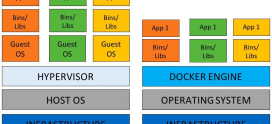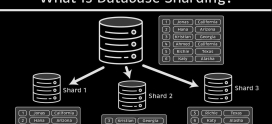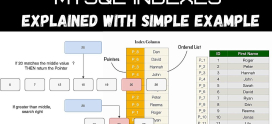
Top 5 MySQL/MariaDB Performance Optimization Techniques
We’ve all been there — staring at a slow-loading database, scratching our heads, wondering why everything feels sluggish. Maybe you’re managing a small website or operating a complex application, and your database seems to be dragging its feet. If you’re frustrated with slow queries, laggy responses, or just want your MySQL or MariaDB to perform like a champ, you’re not alone. It’s a common plight for many database administrators and developers alike. But don’t worry! There are plenty of strategies out there to help your database not just keep pace but truly shine.
Optimizing your database performance can seem daunting, especially if you’re unsure where to start. But think of it like tuning an underperforming engine. With the right tweaks and adjustments, you can get it purring smoothly and efficiently. In this article, we’ll explore five powerful performance optimization techniques specifically designed for MySQL and MariaDB. Whether you’re handling data-heavy applications or simple websites, these strategies can enhance your database’s performance and ultimately improve user experience. Let’s dive in!
1. Indexing Like a Pro
Imagine searching for a book in a vast library. Without a catalog, it would take ages to find what you need. In the same way, indexing helps your database find data quickly. When you index your tables, MySQL or MariaDB can locate rows much faster, which is crucial as your database grows.
Understanding Indexes
Indexes are special data structures that improve the speed of data retrieval operations on a database table. Think of them as the index at the back of a textbook, guiding you to the exact page where your topic is discussed. By creating indexes on columns that are frequently used in WHERE clauses, JOIN conditions, or ORDER BY operations, you can significantly enhance query performance.
Best Practices for Indexing
- Index Selectively: Don’t index every column. Identify the ones that are queried most often.
- Use Composite Indexes: Instead of indexing single columns, consider composite indexes (indexes on multiple columns) for better performance in certain queries.
- Monitor and Analyze: Regularly use tools like MySQL’s EXPLAIN to analyze how your queries utilize indexes.
2. Query Optimization
Just like a chef perfects a recipe, optimizing your queries is essential for database performance. Poorly written queries can lead to slow performance and heavy resource consumption.
Analyzing Your Queries
Take a moment to examine the queries you run. Are there any that seem slow or inefficient? Tools like “EXPLAIN” can show you how your query is executed, helping you pinpoint bottlenecks.
Tips for Writing Efficient Queries
- Avoid SELECT *: Always specify the columns you need rather than pulling all columns from a table.
- Use WHERE Clauses Wisely: Filter results as early as possible, reducing the data returned.
- Limit Results: Use the LIMIT clause to restrict the number of rows returned.
3. Optimize Your Database Schema
The way your database is structured can greatly affect performance. Much like building a sturdy house, a solid schema design will sustain your database in the long run.
Importance of Normalization
Normalization is the process of organizing your database to reduce redundancy and improve data integrity. However, over-normalization can lead to excessive JOIN operations, hampering speed. It’s essential to find a balance.
Denormalization When Necessary
In certain scenarios, you may want to consider denormalization for read-heavy applications. This process involves combining tables to reduce the number of JOINs, resulting in faster read queries.
4. Caching Strategies
Even the best vehicles struggle on a steep hill. Caching is like a turbo boost for database performance, giving it the power needed to climb gracefully.
Using Query Cache
MySQL has an in-built query caching mechanism that can store the results of SELECT statements to be reused for subsequent requests. Ensure that your database queries are optimal to benefit from this feature.
Implementing Application-Level Caching
Cache frequently accessed data in your application using technologies like Redis or Memcached. This way, you prevent repeated hits to your database for the same information, enhancing performance.
5. Monitor and Tune Your Database
You’ve invested time in optimizing; now it’s crucial to keep a watchful eye on your database performance. Think of it as routine maintenance for your vehicle to keep it running smoothly.
Key Monitoring Tools
- Slow Query Logs: Enable slow query logs to identify and optimize performance bottlenecks.
- Performance Schema: Utilize MySQL’s performance schema for a comprehensive look at database metrics.
- Third-party Tools: Consider external monitoring solutions like New Relic or Datadog.
Tuning Configuration Variables
MySQL and MariaDB come with default configurations that may not be ideal for your specific workloads. Regularly tune your DB’s configuration variables based on monitoring data.
FAQs
What is the best way to index my database?
The best way to index your database is to create indexes on columns frequently used in WHERE clauses, JOINs, and ORDER BY clauses. Selective indexing can greatly improve performance without consuming too much storage space.
How can I identify slow queries in MySQL/MariaDB?
You can identify slow queries by enabling the slow query log in MySQL and reviewing it to find queries that exceed a specified execution time. You can also use the EXPLAIN statement to analyze query execution plans.
Does caching really improve database performance?
Absolutely! Caching reduces the number of queries hitting your database by storing frequently-accessed data in memory. This results in faster response times and reduced load on the database server.
What tools can I use to monitor database performance?
You can use built-in tools like MySQL’s performance schema, as well as third-party solutions like New Relic, Datadog, or SolarWinds Database Performance Analyzer to monitor and analyze your database performance.
What’s the difference between MySQL and MariaDB?
MariaDB is a fork of MySQL created by the original developers of MySQL after its acquisition by Oracle. While they share many similarities, MariaDB often includes new features and improvements that are optimized for performance.
How often should I monitor my database performance?
It’s best to monitor your database performance continuously, but establish regular intervals (daily, weekly, or monthly) for more thorough audits of logs and metrics to ensure everything remains optimized over time.
Conclusion
Optimizing your MySQL or MariaDB database might feel overwhelming, but with these five techniques — indexing, query optimization, schema design, caching, and continuous monitoring — you can significantly enhance its performance. Remember, it’s a journey; consistent monitoring and adjustments are key to maintaining optimal performance in the face of changing data needs.
So why not take the first step today? Review your queries, check your indices, and consider implementing effective caching strategies. With a little patience and effort, you’ll find that your database can run smoother and more efficiently than ever before. Start optimizing Today, and watch as your database transforms into a high-performing powerhouse that enhances user experience and meets your application’s demands seamlessly. Happy optimizing!









